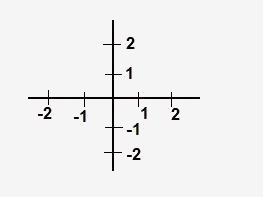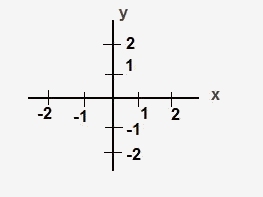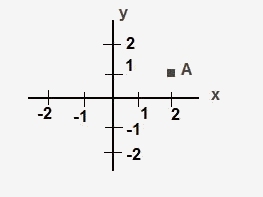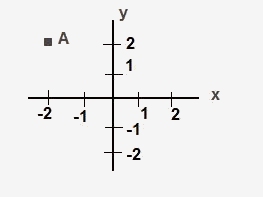The Coordinate System
General Explanation
In our study of algebra, we will often work with lines and graphs. To prepare for this, let's discuss the number line and the coordinate system.
The number line can be used to represent positive and negative numbers: Now try to imagine a two-dimensional number line: Next, we'll label the horizontal line with the letter x and the vertical line with the letter y. This is called the COORDINATE SYSTEM. The horizontal line in our coordinate system is called the X-AXIS and the vertical line is called the Y-AXIS. The point where the two lines meet is called the ORIGIN. Every point in the coordinate system can be defined by its location relative to the origin. To do this, we measure from the origin how far we traveled along the x-axis and the y-axis to reach the point. For example, the point A shown below has an x-coordinate of 2 and a y-coordinate of 1. We can write point A's coordinates as (2,1). The x-coordinate is shown first and the y-coordinate second. Sample Problem
What are the coordinates of A in the image below?
Solution
To find the coordinates of A, do the following steps:
|







